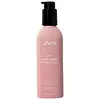What's inside
What's inside
 Key Ingredients
Key Ingredients

 Benefits
Benefits

 Concerns
Concerns

 Ingredients Side-by-side
Ingredients Side-by-side

Water
Skin ConditioningGlycerin
HumectantHeptyl Glucoside
Oryza Sativa Extract
AbsorbentHydroxypropyltrimonium Hydrolyzed Rice Protein/Siloxysilicate
Leuconostoc/Radish Root Ferment Filtrate
AntimicrobialAspergillus Ferment
Skin ConditioningArginine
MaskingC13-15 Alkane
SolventSalvia Hispanica Seed Extract
EmollientGlycine
BufferingAlanine
MaskingSerine
MaskingValine
MaskingIsoleucine
Skin ConditioningProline
Skin ConditioningThreonine
Histidine
HumectantPhenylalanine
MaskingBrassicamidopropyl Dimethylamine
Skin ConditioningXylitylglucoside
HumectantAnhydroxylitol
HumectantMaltitol
HumectantPelvetia Canaliculata Extract
Skin ProtectingHydroxypropyl Methylcellulose
Emulsion StabilisingGuar Hydroxypropyltrimonium Chloride
Skin ConditioningEthylhexylglycerin
Skin ConditioningXylitol
HumectantAspartic Acid
MaskingSodium PCA
HumectantSodium Lactate
BufferingPCA
HumectantSodium Hydroxide
BufferingTocopherol
AntioxidantBenzyl Alcohol
PerfumingSorbic Acid
PreservativeSodium Benzoate
MaskingParfum
MaskingPhenoxyethanol
PreservativeLimonene
PerfumingLinalool
PerfumingCitrus Aurantium Bergamia Fruit Extract
Skin ConditioningCitrus Limon Peel Oil
Masking2,4-Dimethyl-3-Cyclohexene Carboxaldehyde
MaskingCis-3-Hexenyl Methyl Carbonate
PerfumingLavandula Angustifolia Oil
MaskingEthyl Linalool
MaskingTerpineol
Masking2-T-Butylcyclohexyl Acetate
MaskingNeryl Acetate
PerfumingAlpha-Damascone
MaskingGamma-Undecalactone
PerfumingMethyldihydrojasmonate
MaskingGeranyl Acetate
PerfumingTetramethyl Acetyloctahydronaphthalenes
Masking1-Naphthol
Ethylene Brassylate
MaskingC13-16 Isoparaffin
SolventWater, Glycerin, Heptyl Glucoside, Oryza Sativa Extract, Hydroxypropyltrimonium Hydrolyzed Rice Protein/Siloxysilicate, Leuconostoc/Radish Root Ferment Filtrate, Aspergillus Ferment, Arginine, C13-15 Alkane, Salvia Hispanica Seed Extract, Glycine, Alanine, Serine, Valine, Isoleucine, Proline, Threonine, Histidine, Phenylalanine, Brassicamidopropyl Dimethylamine, Xylitylglucoside, Anhydroxylitol, Maltitol, Pelvetia Canaliculata Extract, Hydroxypropyl Methylcellulose, Guar Hydroxypropyltrimonium Chloride, Ethylhexylglycerin, Xylitol, Aspartic Acid, Sodium PCA, Sodium Lactate, PCA, Sodium Hydroxide, Tocopherol, Benzyl Alcohol, Sorbic Acid, Sodium Benzoate, Parfum, Phenoxyethanol, Limonene, Linalool, Citrus Aurantium Bergamia Fruit Extract, Citrus Limon Peel Oil, 2,4-Dimethyl-3-Cyclohexene Carboxaldehyde, Cis-3-Hexenyl Methyl Carbonate, Lavandula Angustifolia Oil, Ethyl Linalool, Terpineol, 2-T-Butylcyclohexyl Acetate, Neryl Acetate, Alpha-Damascone, Gamma-Undecalactone, Methyldihydrojasmonate, Geranyl Acetate, Tetramethyl Acetyloctahydronaphthalenes, 1-Naphthol, Ethylene Brassylate, C13-16 Isoparaffin
Water
Skin ConditioningCetearyl Alcohol
EmollientBehentrimonium Chloride
PreservativeAmodimethicone
CI 77891
Cosmetic ColorantCI 17200
Cosmetic ColorantCI 19140
Cosmetic ColorantMica
Cosmetic ColorantHydroxycitronellal
PerfumingPhenoxyethanol
PreservativeTrideceth-6
EmulsifyingLimonene
PerfumingBenzoic Acid
MaskingLinalool
PerfumingIsopropyl Alcohol
SolventPotassium Hydroxide
BufferingCetrimonium Chloride
AntimicrobialHexyl Cinnamal
PerfumingGlycolic Acid
BufferingParfum
Masking
 Reviews
Reviews

Ingredients Explained
These ingredients are found in both products.
Ingredients higher up in an ingredient list are typically present in a larger amount.
Limonene is a fragrance that adds scent and taste to a formulation.
It's found in the peel oil of citrus fruits and other plants such as lavender and eucalyptus. The scent of limonene is generally described as "sweet citrus".
Limonene acts as an antioxidant, meaning it helps neutralize free radicals.
When exposed to air, oxidized limonene may sensitize the skin. Because of this, limonene is often avoided by people with sensitive skin.
The term 'fragrance' is not regulated in many countries. In many cases, it is up to the brand to define this term. For instance, many brands choose to label themselves as "fragrance-free" because they are not using synthetic fragrances. However, their products may still contain ingredients such as essential oils that are considered a fragrance.
Learn more about LimoneneLinalool is a fragrance and helps add scent to products. It's derived from common plants such as cinnamon, mint, citrus, and lavender.
Like Limonene, this ingredient oxidizes when exposed to air. Oxidized linalool can cause allergies and skin sensitivity.
This ingredient has a scent that is floral, spicy tropical, and citrus-like.
Learn more about LinaloolParfum is a catch-all term for an ingredient or more that is used to give a scent to products.
Also called "fragrance", this ingredient can be a blend of hundreds of chemicals or plant oils. This means every product with "fragrance" or "parfum" in the ingredients list is a different mixture.
For instance, Habanolide is a proprietary trade name for a specific aroma chemical. When used as a fragrance ingredient in cosmetics, most aroma chemicals fall under the broad labeling category of “FRAGRANCE” or “PARFUM” according to EU and US regulations.
The term 'parfum' or 'fragrance' is not regulated in many countries. In many cases, it is up to the brand to define this term.
For instance, many brands choose to label themselves as "fragrance-free" because they are not using synthetic fragrances. However, their products may still contain ingredients such as essential oils that are considered a fragrance by INCI standards.
One example is Calendula flower extract. Calendula is an essential oil that still imparts a scent or 'fragrance'.
Depending on the blend, the ingredients in the mixture can cause allergies and sensitivities on the skin. Some ingredients that are known EU allergens include linalool and citronellol.
Parfum can also be used to mask or cover an unpleasant scent.
The bottom line is: not all fragrances/parfum/ingredients are created equally. If you are worried about fragrances, we recommend taking a closer look at an ingredient. And of course, we always recommend speaking with a professional.
Learn more about ParfumPhenoxyethanol is a preservative that has germicide, antimicrobial, and aromatic properties. Studies show that phenoxyethanol can prevent microbial growth. By itself, it has a scent that is similar to that of a rose.
It's often used in formulations along with Caprylyl Glycol to preserve the shelf life of products.
Water. It's the most common cosmetic ingredient of all. You'll usually see it at the top of ingredient lists, meaning that it makes up the largest part of the product.
So why is it so popular? Water most often acts as a solvent - this means that it helps dissolve other ingredients into the formulation.
You'll also recognize water as that liquid we all need to stay alive. If you see this, drink a glass of water. Stay hydrated!
Learn more about Water